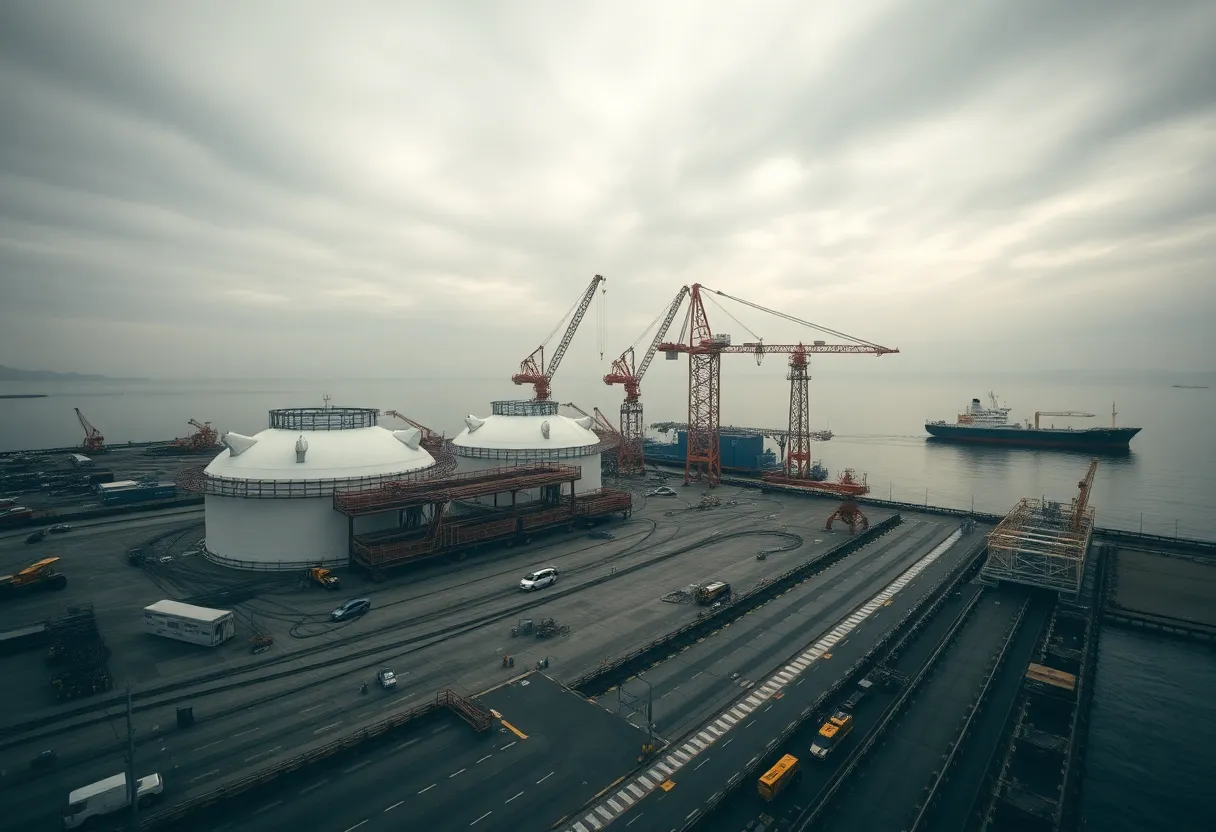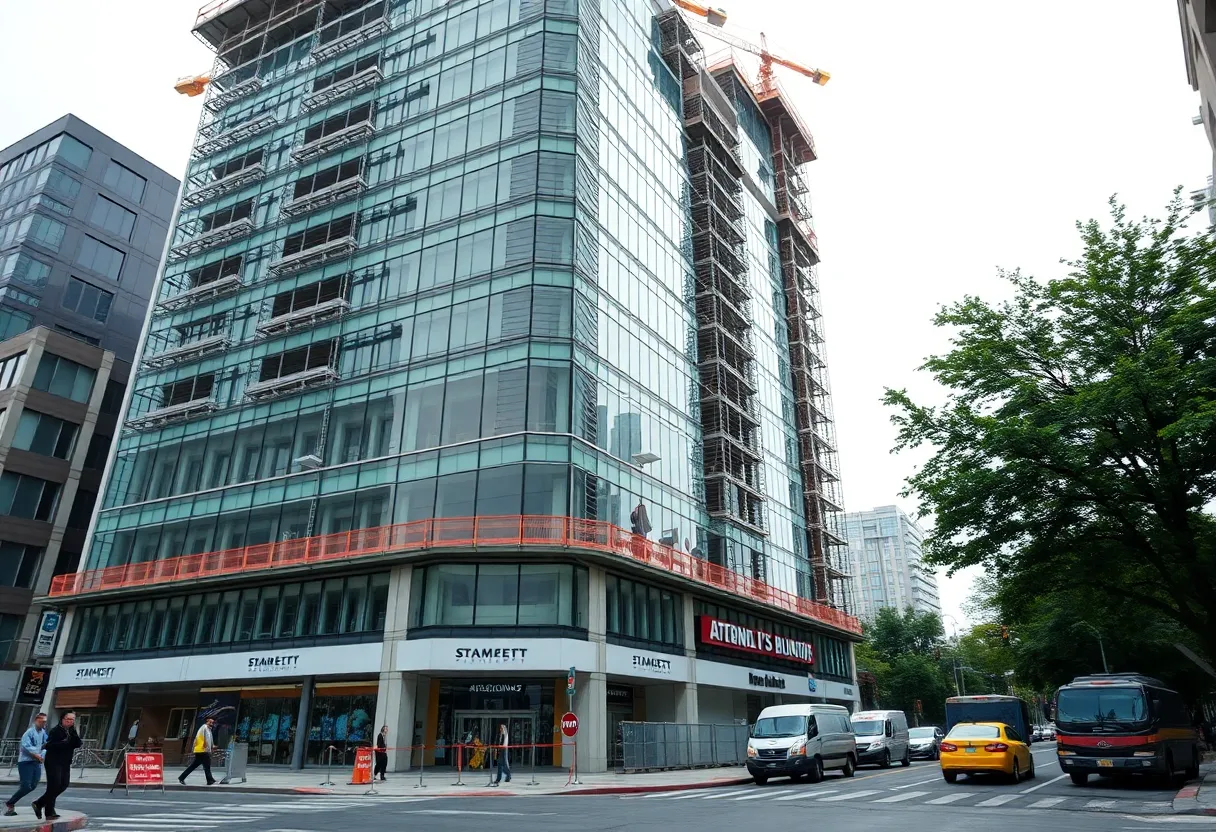Port of Brownsville, Texas, September 6, 2025
News Summary
The Federal Energy Regulatory Commission reissued the Final Order authorizing construction and operation of the Texas LNG export facility at the Port of Brownsville, clearing a major regulatory hurdle and accelerating the developer’s path to a targeted final investment decision before year‑end. The reauthorization follows a supplemental environmental review and sets a construction completion target toward the end of the decade for the two‑train, 4 mtpa terminal. Owners report offtake commitments sufficient to support FID while a major EPC contractor leads construction. The decision comes amid concerns about potential global LNG oversupply and construction and financing risks.
FERC Reissues Final Order for Texas LNG; Project Accelerates Toward Year‑End Investment Decision as U.S. Faces Global Oversupply Risk
Regulators reissued the final authorization for the Texas LNG export project on August 21, 2025, moving the approval up by three months and clearing a major hurdle for the developer. The action includes a formally approved construction schedule that targets mechanical completion by November 2029. The developer is targeting a Final Investment Decision by the end of the year, and says customer commitments are in hand at volumes sufficient to support that step.
Why this matters now
The reissuance follows a court-ordered review and a supplemental environmental analysis by regulators. The order affirms that the project is consistent with public-interest criteria and keeps prior compliance directives in force. The regulator also granted an extension that moves the start-of-operations deadline from November 2024 to November 2029, giving the project time to meet construction and permitting conditions before commercial startup.
Project basics and commercial setup
The project is planned as a two-train liquefaction terminal located inside the Port of Brownsville, Texas, with a Department of Energy export permit for up to 4 million metric tons per year of LNG, equivalent to roughly 204.4 billion cubic feet of natural gas per year. Feed gas is expected to be supplied through a third‑party pipeline. The engineering, procurement and construction scope is led by a major EPC contractor under a lump-sum turnkey arrangement. The developer reports offtake commitments from several trading and energy companies and a large European utility, which it says provide the volume basis needed to move toward a final investment decision.
Regulatory path and court history
The reissued authorization concludes a multi-stage regulatory review that included a supplemental environmental impact statement addressing air quality and environmental justice concerns raised in a court appeal. A federal appeals court previously vacated an earlier authorization, then later issued a remand without vacatur, prompting the supplemental study and the reauthorization. The regulator’s recent action reaffirms earlier findings while leaving prior compliance instructions active.
Where this sits in a crowded market
The Texas project is one of many U.S. export developments that are advancing at different stages. Industry data and market research indicate that global LNG supply could outpace demand as soon as 2027, with new large-scale capacity from major producers and pipeline routes expected to weigh on long-term market tightness. By 2030, a major producing country is expected to complete an extended buildout that will add deep new export capacity, and by 2031 large pipeline expansions could re-route substantial volumes of gas into fast‑growing Asian markets. One market scenario projects that expanded pipeline flows could displace up to 40 million metric tons per year of seaborne LNG demand.
U.S. projects to watch and industry headwinds
Several large U.S. projects are under construction or awaiting final investment decisions. Combined, four pending projects carry capacity potential of roughly 63 million tons per year. Major projects currently moving forward include multi‑billion dollar facilities targeting start dates through the late 2020s. Meanwhile, roughly $35 billion in U.S. plants already under construction face labor and supply‑chain pressures that have pushed some timelines back. One large export facility recently came online a year later than planned after a contractor bankruptcy and workforce shortages illustrated how tight labor markets can ripple through the buildout.
Implications and outlook
The reissued authorization clears a key regulatory step and gives the project a defined construction timetable. If the developer achieves a year‑end investment decision and stays on schedule, the terminal could begin contributing to U.S. export capacity before the decade’s end. However, the broader market backdrop presents risks: an expected rise in global supply, major overseas buildouts and new long‑distance pipeline flows to large Asian buyers could reduce price support for new U.S. capacity. Project backers and contractors will also need to navigate a tight labor market and keep to lump-sum timelines to avoid further delays and cost growth.
Next milestones
- Final Investment Decision expected by the developer before year‑end.
- Ongoing construction preparations under the approved schedule aiming for November 2029 mechanical completion.
- Continued compliance with regulator directives and construction oversight tied to the reissued authorization.
FAQ
What did the regulator approve?
The regulator reissued the final authorization to construct and operate the Texas LNG export terminal and approved its construction schedule, moving the formal sign‑off up by three months.
What is the export capacity and timing?
The project holds export permits for up to 4 million metric tons per year. The approved construction schedule targets completion by November 2029.
Who is leading construction?
A major engineering, procurement and construction contractor was awarded the lump‑sum turnkey contract to build the plant.
Has the project cleared legal challenges?
The project completed a supplemental environmental review required after a court remand. The regulator affirmed that the project meets public‑interest standards and kept prior directives in effect.
How does this fit with global LNG trends?
Market research indicates global LNG supply could exceed demand by 2027, and further large projects and pipeline expansions through 2030–2031 may add more supply. That creates price and commercial risk for new export capacity.
Key project features
| Feature | Detail |
|---|---|
| Project name | Texas LNG export terminal, Port of Brownsville, Texas |
| Permitted export volume | 4 million metric tons per year (~204.4 Bcf/yr natural gas equivalent) |
| Planned capacity | Two liquefaction trains; part of a federally authorized portfolio totaling 32.8 million tonnes per annum |
| Construction contractor | Major EPC contractor under a lump-sum turnkey contract |
| Regulatory milestone | Final authorization reissued on August 21, 2025; construction schedule approved |
| Target commercial date | Mechanical completion targeted by November 2029 |
| Commercial commitments | Offtake agreements in place with trading firms, a large utility and other buyers sufficient to aim for FID |
| Next key step | Developer targets a Final Investment Decision by year‑end |
Deeper Dive: News & Info About This Topic
Additional Resources
- National Law Review: FERC affirms Texas LNG export project remand
- Wikipedia: Texas LNG
- Inspenet: FERC grants approval for the construction of the Texas LNG project
- Google Search: Texas LNG project
- Business Wire: FERC Provides Accelerated Final Order for Texas LNG
- Google Scholar: Texas LNG FERC
- Pipeline & Gas Journal: Texas LNG targets final investment decision by December
- Encyclopedia Britannica: liquefied natural gas
- Oil & Gas Journal: Texas LNG receives FSEIS from FERC
- Google News: Texas LNG





